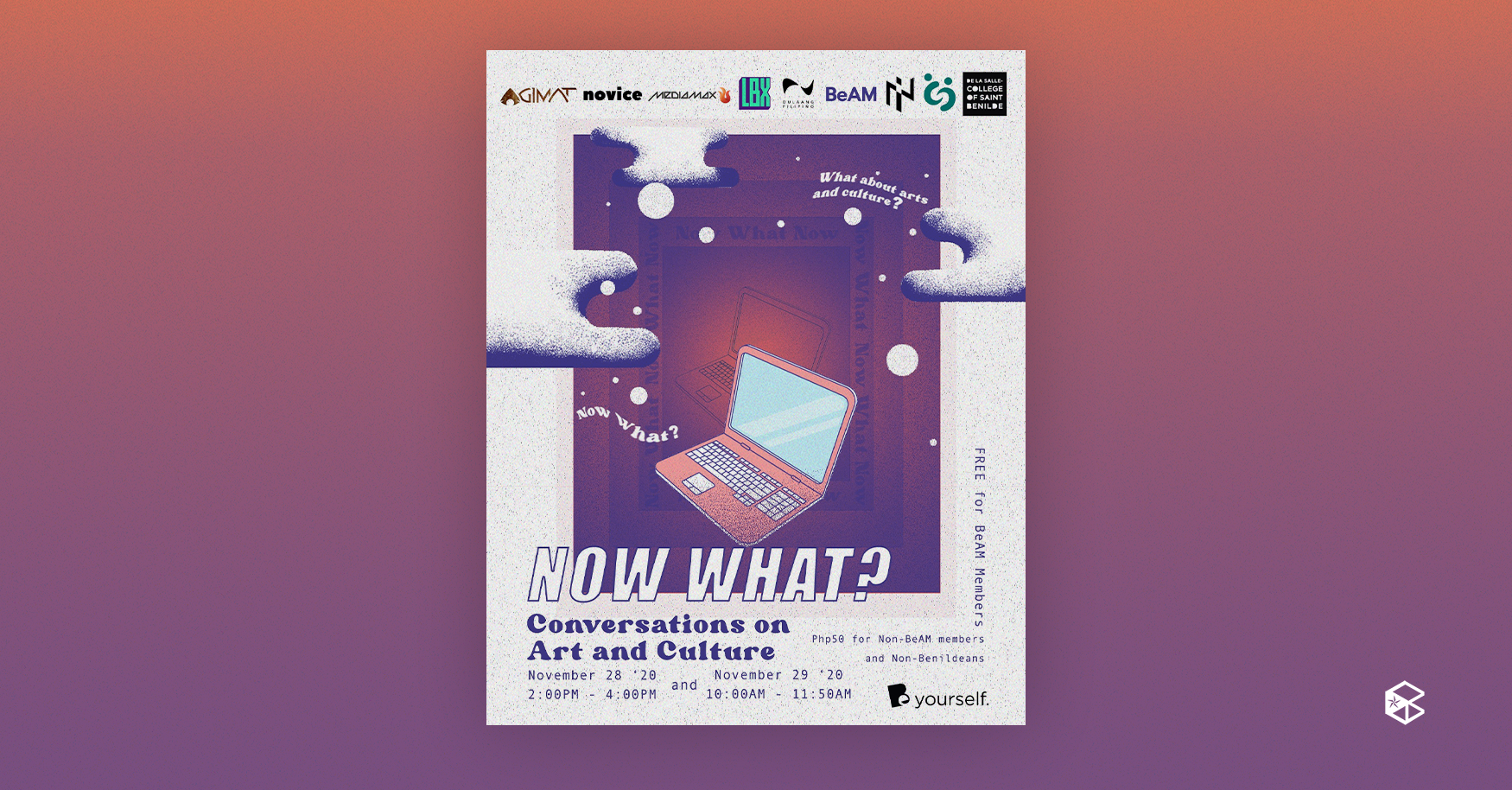Benilde Arts Management (BeAM) provided an avenue to help aspiring artists become aware of the current situation in the art industry, as well as how they can cope and shift through this predicament through the two-day webinar “Now What? Conversations on Arts and Culture” last Nov. 28 to 29 via Zoom.
The two-day webinar expounds on opportunities, transitions, analysis, and impact on the industry and its artists to shift to virtual and strict strategies, and how they cope with the changes and hardships brought upon by the COVID-19 pandemic.
The first day of the webinar commenced with an opening remarks by BeAM adviser Alain Zedrick Camiling by sharing his hopeful sentiments that the seminar would help the artists in the webinar on improving and doing what they can in these trying times.
Art Industry’s transition to the new normal
The first guest speaker, Arts Management instructor Sandra Palomar-Quan, presented her discussion titled “Theatrical Productions at a Time of Crisis,” thoroughly looking into how the arts industry adjusted in the time of pandemic.
She started the discussion by showing a statistical outlook of the impact of the pandemic to the income of workers and artists through comparing previous economic recessions and health disasters in the past. It revealed that not only did it have a huge income loss in the art industry, but it also hugely affected artists where 94% of them are worried for the uncertain future that lies ahead of them.
However, she clarified that despite all the downsides, there are still silver linings to look forward to with a lot of artists slowly returning to the stage as they transitioned to a virtual approach.
She showcased valiant efforts the artists made throughout the pandemic such as live and recorded footage of theatrical performances, art movements, advocacies and commissions, while others are guiding the artists about health protocols in art performances through webinars that help them become aware of the situation.
"I find it hopeful to discuss the performing arts can be in a better normal, but until it actually happens, our “now” is an abnormal time, and the question “Now What?” begs me to consider that the performing arts will continue to be undesirable and everyone in the business should just stop asking,” Palomar said before ending her discussion.
The next speaker, Head of the Visual Arts Committee of the National Commission for Culture and Arts (NCCA) Geraldine Araneta, discussed the artistic and creative platforms created during COVID-19.
She elaborated on how various sectors of the arts adjusted to health protocols and precautions for the sake of delivering art to the people such as using social media to livestream shows and performances and the use of Patreon that helps fund artists through exclusive content.
Furthermore, she also discussed how the government and other organizations are helping and addressing the issues of the arts sector by starting up art competitions and funding various art organizations for webinars, liveshows, and projects.
"It's already your role, to be able to see how you can be creative in the time of the pandemic such as how you can use the resources at hand," Araneta answered when asked how students should adjust to the new normal.
The webinar was followed by an open forum where guests were asked various questions pertaining to restrictions and limitations to theatrical shows and perspectives on various art forms in the context of the pandemic.
“All traditional art forms will remain relevant, what I think [is] we’re being tested at how we can understand these traditional forms and formats in a digital world, which will create other types of artwork,” Palomar-Quan answered when asked how theatrical productions become interpreted in a technological stance.
Online Marketing: The power and voice for the arts and culture
On Nov. 29, Bennet Dychangco, a Resource Person for Marketing, Branding and Business at the Philippine Trade Training Center, discussed the fundamentals of Online Marketing and its huge impact towards arts and culture especially in times of a global pandemic.
"The bad news is that nobody really knows. The good news is that we actually know how to find an answer. There is a way of knowing," Dychangco said when asked how online marketing can contribute to sharing art.
He expounded on theories, frameworks, terminologies, and processes that strengthen to improve the relational advantage of marketing and arts and culture. Dychangco also provided further analysis on previous advertisements, brandings, and promotional materials that contribute to the art market.
He concluded his talk with parting words to ponder and tips to maintain a balance of marketing and art and culture, and to pursue one’s passions and use them to reach a wider audience.
"As arts managers, you have something to decide for yourself—what kind of art managers are you going to be? Are you going to contribute to perpetuating a system that is unjust or are you going to contribute to changing a society to a more just and humane society?"
This webinar was followed by another discussion forum with the speaker, where they gave further tips on marketing strategy for financial gains in the middle of a pandemic, and how students could apply these technicalities in marketing to sharing and expounding their craft.
“Now What? Conversations on Arts and Culture” is a two-day webinar spearheaded by BeAm that is dedicated to discussing the current situation of the Philippine arts sector in the midst of a pandemic.


